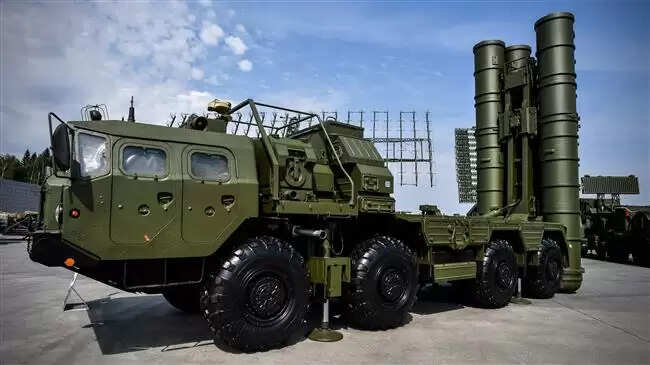India's S-400 Missile System: A Game-Changer in Air Defense Amidst Rising Tensions

India's Strategic Deployment of the S-400
In May 2025, as tensions escalated into a full-scale conflict with Pakistan, India activated the S-400 missile system to counter aerial threats. Pakistani drones and missiles targeted critical military installations in Jammu, Pathankot, Amritsar, and various western cities. The S-400's rapid response and accuracy neutralized these threats before they could cause damage, protecting both military and civilian assets.
This incident marked the first combat deployment of the S-400, significantly altering the defense dynamics in the region.
Understanding the S-400 Missile System
The S-400 Triumf, known as 'Sudarshan Chakra' in India, is among the most sophisticated long-range surface-to-air missile systems globally. Developed by Russia's Almaz Central Design Bureau, it is engineered to target aircraft, cruise missiles, ballistic missiles, and even stealth technology, with an operational range of up to 400 kilometers. Its development traces back to the late 1980s as an enhancement of the Soviet-era S-200 and S-300 systems.
Operation Sindoor: A Tactical Response
In retaliation for a deadly terrorist attack in Pahalgam, India initiated Operation Sindoor, targeting terrorist camps across the border. In response, Pakistan launched a coordinated missile and drone assault on 15 Indian cities.
The S-400 units in India effectively intercepted all incoming threats, achieving the following:
- Preventing casualties and damage to infrastructure
- Maintaining airspace control
- Facilitating uninterrupted Indian offensive operations

Mechanics of the S-400 System
The S-400 employs advanced radar systems, interconnected launchers, and a combination of four missile types to establish a comprehensive defense network. Depending on the threat level, it can deploy:
- 9M96E/9M96E2 missiles for medium-range threats (up to 120 km)
- 48N6E3 missiles for high-speed aircraft (up to 250 km)
- 40N6E missiles for long-range threats (up to 400 km)
The radar system can track up to 300 targets simultaneously and engage 36 at once, including stealth aircraft and ballistic missiles.
Unique Features of the S-400
- Speed: Missiles can reach speeds of up to 17,000 km/h (Mach 14)
- Altitude: Capable of intercepting threats from as low as 10 meters to as high as 30 km
- Mobility: The system can be deployed within 5-10 minutes, mounted on trucks
- Resilience: Designed to withstand electronic warfare and jamming
- Integration: Works seamlessly with other systems like S-300, Pantsir, and Tor
India's Acquisition and Implementation
In October 2018, India finalized a $5.4 billion agreement with Russia for five S-400 units, marking one of its largest defense procurements. Despite facing geopolitical challenges, including potential sanctions from the US, India prioritized its national security needs.
By 2024, at least three systems were delivered and integrated into India's air defense framework. The deployment during Operation Sindoor in 2025 confirmed their operational capability.
Future of India's Air Defense
The S-400 is now a pivotal element of India's multi-layered air defense strategy. In conjunction with indigenous systems like Akash and future acquisitions such as the S-500, India is fortifying its defenses against emerging aerial threats.
